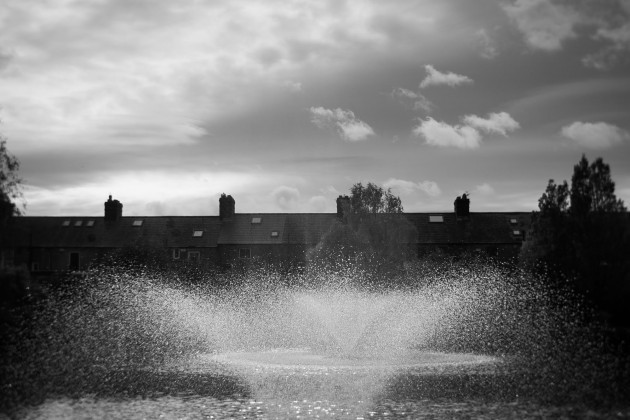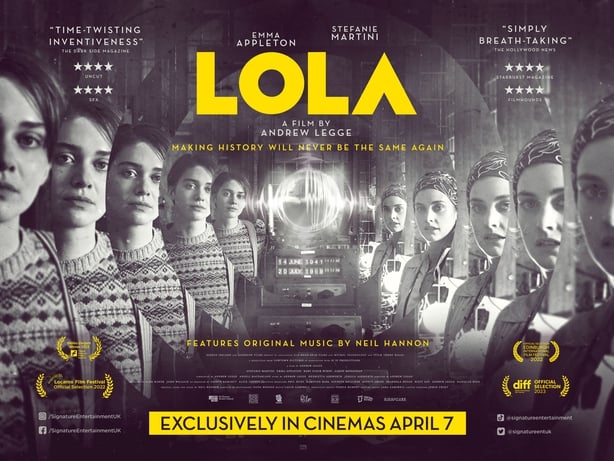 This was a kind of weird supergroup affair at which an odd collection of musicians got together in Whelan's to play the songs from Iggy Pop's 1977 album Lust for Life and some other tunes of the era. It was originally meant to feature Tony Fox Sales, who had played bass and some guitar on the album, but he had to drop out. This meant that none of the musicians present had any direct connection to the album, though some of them did play with Iggy Pop on other occasions. But who were they? Well let me list them:
This was a kind of weird supergroup affair at which an odd collection of musicians got together in Whelan's to play the songs from Iggy Pop's 1977 album Lust for Life and some other tunes of the era. It was originally meant to feature Tony Fox Sales, who had played bass and some guitar on the album, but he had to drop out. This meant that none of the musicians present had any direct connection to the album, though some of them did play with Iggy Pop on other occasions. But who were they? Well let me list them:
- Kevin Armstrong, guitar: he played with Iggy Pop and David Bowie in the 1980s and onwards, but is most famous to me for co-writing Morrissey's "Piccadilly Palare"
- Clem Burke, drums: formerly of Blondie and The Ramones, he is regarded as one of the great drummers of the new wave era
- Luis Correia, guitar: a previously unknown quantity for me, he is based in London and has played with various people
- Glen Matlock, bass: holy fuck, it's Glen fucking Matlock, bassplayer with the Sex Pistols, the man who wrote "Pretty Vacant"; he has also played with and written at least one song for Iggy Pop
- Katie Puckrik, lead vocals: a bit of a leftfield choice, as Ms Puckrik is best known to people of my generation not for her singing but for presenting The Word in the 1990s. Back then she was also something of a doppelgänger of my sister, while more recently she has flown the flag for yacht rock to a worrying extent
- Florence Sabeva, keyboards: another figure of mystery, she is another London based musician who has played with various people as well as recording her own music and composing soundtracks.
So what was it like? Well, what do you think it was like? It was a load of solid musicians fronted by a surprisingly impressive American lady banging through some top tunes. For all that Iggy Pop's Lust for Life was billed as the gig's focus, to me it felt like it really went into overdrive in the second part of the set, when they were playing various other punk tunes as well as some older Stooges classics. That put me in mind of a fundamental problem with the whole Don't Look Back thing of bands playing their classic albums, separate to the whole debate around whether there is a kind of artistic bankruptcy to playing songs in album order: basically, on albums, the big songs tend to be towards the beginning, so that the record makes an initial impact on listeners, but at a gig you want to put them further back so that the set builds up to them (careful readers may notice that I am contradicting what I said about the performance of Faust IV I attended at Le Guess Who in 2021). Opening with the song "Lust for Life" when the audience are yet to warm up is a waste of a tune and not something you would do if you were not playing the songs in album order. I also had the embarrassing problem of realising that I do not actually know Lust for Life that well (it is years since I listened to it) and was continuously afraid that I would be burned at the stake as an unbeliever.
One of my great grumbles these days is that crowds aren't as up for it as they were in the late 1980s and early 1990s when people moshed to everything (not always in a good way), so I was a bit disappointed by the Lust for Life attendees. OK so yes they did show their appreciation between songs, but there was a definite "standing there with their arms folded having a great time" energy when the band were blasting through the punk classics. I accept that many of the audience were a bit on the old side, but that makes it even worse: they should be able to remember the way things were in the old days, and if they are out for their one gig of the year they should be going hog wild. I could not face being stuck at the back behind these people indefinitely, and when the opening chords of "I Wanna Be Your Dog" rang out I took my chance to charge to the front; I was irked that more people did not follow me.
Some actual moshing kicked off by the gig's end, with a storming version of "Pretty Vacant" making for a great highlight to the evening, for all that the band were somewhat inexplicably joined for this by B. P. Fallon (who did not seem to do anything bar stand there while Matlock looked after the vocals). Crowd reaction suggested we seem to have reached a point in human history where Fallon is now regarded as cool. I suppose if you wait long enough anything is possible.
And then the gig ended and I went home. It was a hot sweaty concert and it took me weeks to shake off the cold I picked up.





:quality(70)/cloudfront-eu-central-1.images.arcpublishing.com/irishtimes/HQRCWURP7ZJ2XEIKFOHNMZEX6Q.jpg)



:quality(70)/cloudfront-eu-central-1.images.arcpublishing.com/irishtimes/WLGNJRI2TZCXLDOVVVK6L65BPA.jpg)
